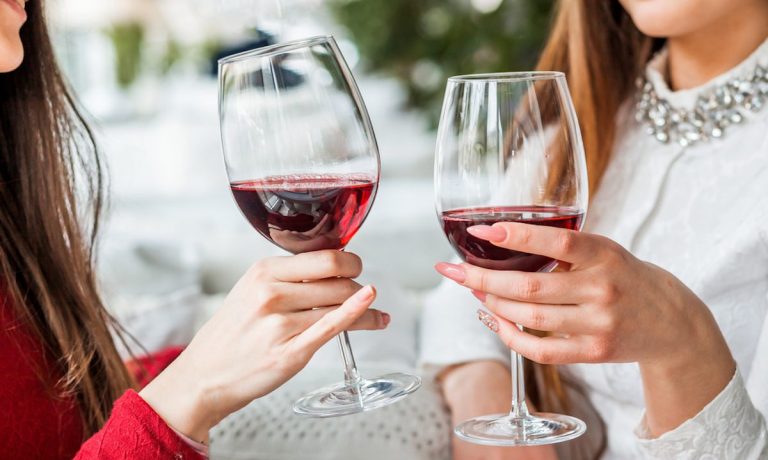
The digital shift may have completely transformed most food and beverage brands and retailers, with consumers getting more of their restaurant and grocery needs met through online channels than ever before. However, one major category has been left out of this trend: alcoholic beverages. A PYMNTS survey of around 2,000 United States adults conducted earlier this year found that only 15% of consumers purchase alcohol online to have it delivered at a later date, and only 14% purchase alcohol online to have it delivered that same day.
On Tuesday (Nov. 23), Thirstie, an alcoholic beverage-focused technology company, announced the launch of its branded gift cards, the first of their kind for liquor brands, which can be used for purchases from Thirstie-powered sites.
Read more: Thirstie Debuts Branded Gift Cards for Liquor Industry
“The old adage, ‘if you build it, they will come,’ I think we all recognize isn’t the reality,” Devaraj Southworth, the company’s CEO and co-founder, told PYMNTS in an interview. “So we have highly compliant digital storefronts that Thirstie is powering, we have data and analytics capabilities of consumer shopping behaviors to feed back to brand leadership, but to actually have a strong on-ramp to increase digital consumption of a very traditional industry, that’s pretty compelling.”
He highlighted the results of the company’s survey of more than 2,000 U.S. consumers, which found that almost twice as many respondents would be interested in giving a gift card for alcoholic beverages than a specific bottle, adding that consumers using these gift cards are likely to not only purchase from brands’ online shops, but to also spend above the card’s value.
The Roaring 20s
Southworth traces many of the challenges facing liquor brands in the digital marketplace back to legislation passed in the time of Prohibition that banned brands from interacting directly with consumers. Thirstie addresses these challenges by using the storefronts to guide consumers to local retailers.
“Alcohol sales have been a little slower to join the [eCommerce] party, but I think we all can say at this point, the growth is absolutely there,” he said, adding that in 2020, Thirstie’s brands saw sales rise “anywhere between 500% and 700%.”
Throughout 2021, much of the growth in alcohol eCommerce has been through marketplaces, with Uber Eats completing its acquisition of Drizly, DoorDash adding alcoholic beverages in select areas, Instacart rolling out its on-demand alcoholic beverage delivery in partnership with supermarket chain Meijer and more. Thirstie, meanwhile, aims to help brands catch up in terms of building direct relationships with consumers through branded eCommerce sites.
“Every brand, from Nike to Gucci to Dove body wash, has been able to sell directly to the consumer, but alcohol companies quite literally are getting left behind,” he noted.
Drinking, by the Numbers
Despite widespread reports of quarantine binge drinking, PYMNTS’ survey finds that the majority of alcohol drinkers actually maintained about the same level of alcohol consumption during the pandemic. Additionally, the share of all consumers who report lower alcohol consumption (25%) is actually slightly greater than the share reporting higher consumption (22%).
That said, it is technically possible that the total number of drinks purchased nonetheless increased, since someone in the former group may have only cut their consumption by a drink or two a week, while someone in the latter may have begun drinking significantly more. Still, while 98% of consumers who decreased their consumption reported that they expect to maintain some or all of the changes even once contagion concerns subside, only 70% of those who increased their consumption said the same.
For Thirstie’s part, Southworth noted that the trend of returning to pre-pandemic levels of mobility since the start of the vaccine rollout has not had a huge impact on how consumers engage with the company’s digital storefronts, given that the use case of visiting a brand’s website is very different than that of, say, going to a bar.
What Lies Ahead
In the near future, Southworth wants to focus on building contextual commerce technology into stores’ sites, integrating shoppability into articles, videos and more.
“We’re going to be doing more as far as integrations with content to commerce, so that the ability to purchase is embedded within the very fabric of that story,” said Southworth. “For brands, the storytelling aspect is critical … [with] the ability to embed buying experiences within the content.”
Additionally, he hopes to make more payment options available, given that currently, all Thirstie transactions occur by credit card and now by gift card. He noted that the company will be experimenting with Apple Pay, Google Pay, Amazon Pay and other digital wallets “in the next six months.”
With gift cards, increased payment capabilities and contextual commerce, Southworth aims to drive up adoption, significantly increasing eCommerce’s share of total transactions. A 2019 IWSR study found that online sales made up only 1% of all off-trade retail sales of alcoholic beverages.
“We can get our industry to 10% of digital transactions in the next five years, and maybe it gets to 20% in the next 10 years,” predicted Southworth. “And the reason I can say that with relative confidence, and it may be off by a few percentage points, is that in other countries like France and China, that digital penetration is between 10% and 20%.”